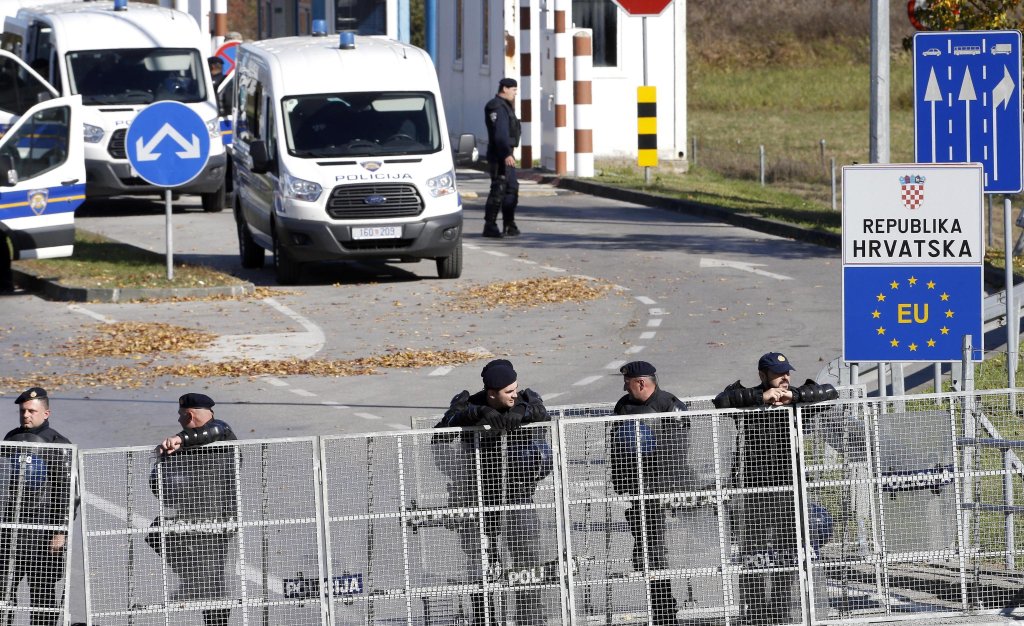German Interior Minister Nancy Faeser visited Bosnia this week to take part in talks on migration. But why was she there? Here's a look at the state of migration in the southeastern European country.
Six years ago, the number of unauthorized entries into Bosnia, which lies along the so-called Balkan route that migrants take from Greece and Turkey to western Europe, exploded. The country, which saw 755 entries during the entire year of 2017, recorded more than 24,000 in 2018. Although figures have remained steady since --- declining during the pandemic after years of steep rise --- they are nowhere near where they were in 2017.
According to the UN migration agency IOM's figures for Bosnia, 2023 registered the greatest number of arrivals to the small eastern country since 2017. Figures from the first five months of 2024 indicate this year's arrivals could equal, if not surpass, those of last year.
This data may have been partly why German Interior Minister Nancy Faeser made an "unannounced working visit" to Bosnia on Tuesday (June 11).
According to German government sources, Faeser discussed "border protection, cooperation on repatriations, visa practice and the fight against organized crime" with Bosnian officials, dpa reports.

Why Bosnia?
Bosnia is a transit country for migrants, who only stay an average of 36 days before moving on to neighboring Croatia, according to the IOM.
Interviews the agency conducted with some 550 migrants in Bosnia in April revealed that 76% had already attempted to cross the Croatian border at least once.
Part of the reason behind the rise in migrants entering Bosnia over the past year could be the fact that neighboring Serbia has been asked to tighten its visa rules and its checks at airports.
Migrants may be trying to circumvent these controls by diverting to Bosnia, the IOM suggests.
In the spring, Croatia’s Interior Minister Davor Bozinovic said that more than 50% of asylum seekers in Croatia came from either Turkey, Russia or China. All three countries have visa-free arrangements with Bosnia and Serbia.
In 2023, according to German government sources, 35,000 more Turkish nationals entered Bosnia than officially left.
Also read: Croatia tightens border checks as Balkan migration route gets busier

EU membership
Bosnia was greenlighted on March 21 to begin accession talks with the EU, but there have been "concerns over rule of law issues" in the country.
EU countries --- like Faeser's Germany --- are keen to offer support to the southeastern European country, particularly when it comes to efforts to dampen irregular migration and strengthen the country's rule of law.
The EU has promised some 6.4 million euros in funding to Bosnia aimed at "strengthening border and migration management."
And at the end of May, a new cohort of police recruits graduated from an EU-funded training program in the country.
Bosnian authorities have requested an "upgraded working relationship" with the European Border and Coast Guard Agency Frontex.

Problems at Bosnian reception centers
Bosnia's migrant centers have a capacity of around 5,000 beds, the European Council on Refugees and Exiles (ECRE) noted in a report in March.
Although some migrants are reportedly pleased to be sheltered after living rough along the Balkan route, others have spoken out about the poor conditions in the centers.
The NGO Collective Aid, which works in Bosnia, France and Serbia, gathered video evidence from migrants of conditions inside a center for men near Sarajevo that appeared to show "inadequate conditions" in bathrooms and toilets, with holes in the walls and mold.
And a detention center in the Bosnian town of Lukavica has also been described by local NGOs as a "black hole," reported ECRE, "where people on the move, including families and children, are detained for long periods without understanding the reason and period of their detention and often while experiencing racism from the guards."
Some news outlets have also reported issues with tranquilizer addiction among the migrants who traverse the Balkan route. A recent report in the EU Observer suggests this is happening "due to over-prescription and unbearable living conditions" along the route, including in Sarajevo.
Also read: Migrants dying 'without a trace' on the Balkan route
